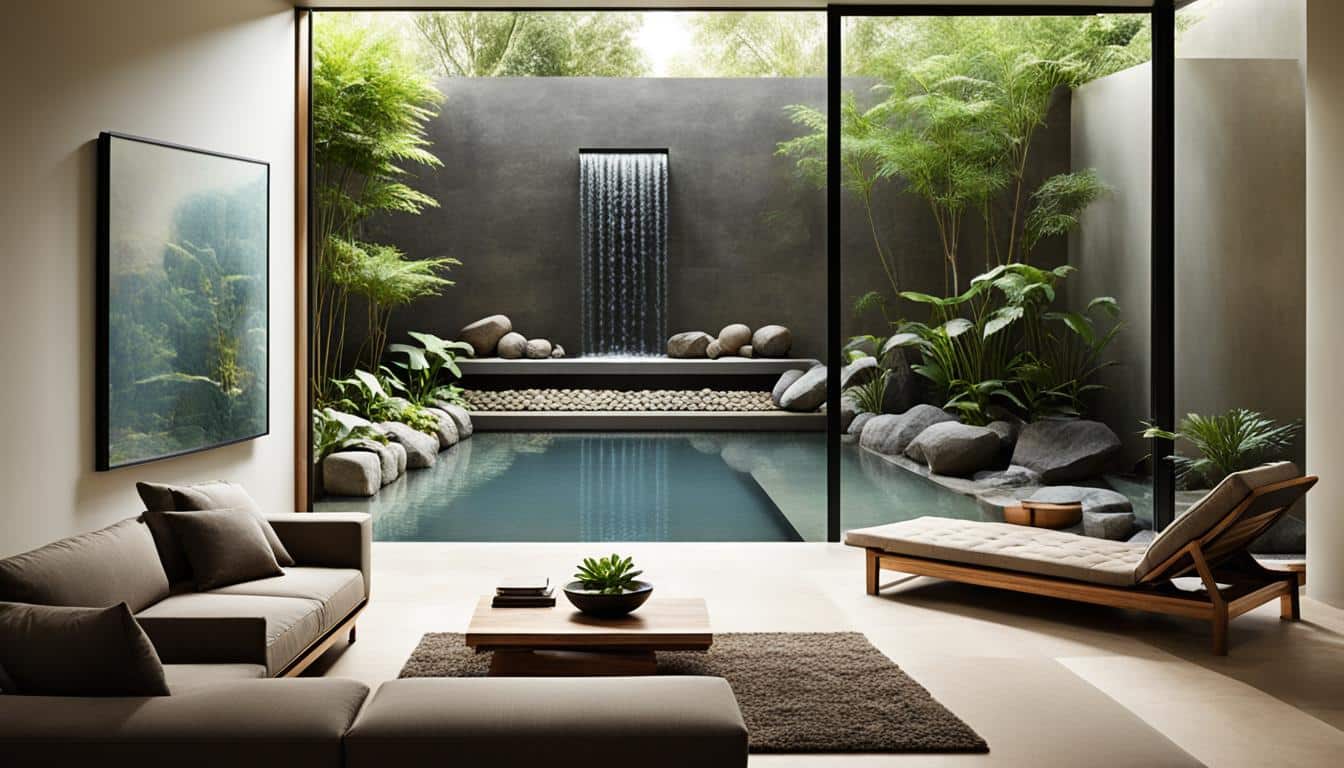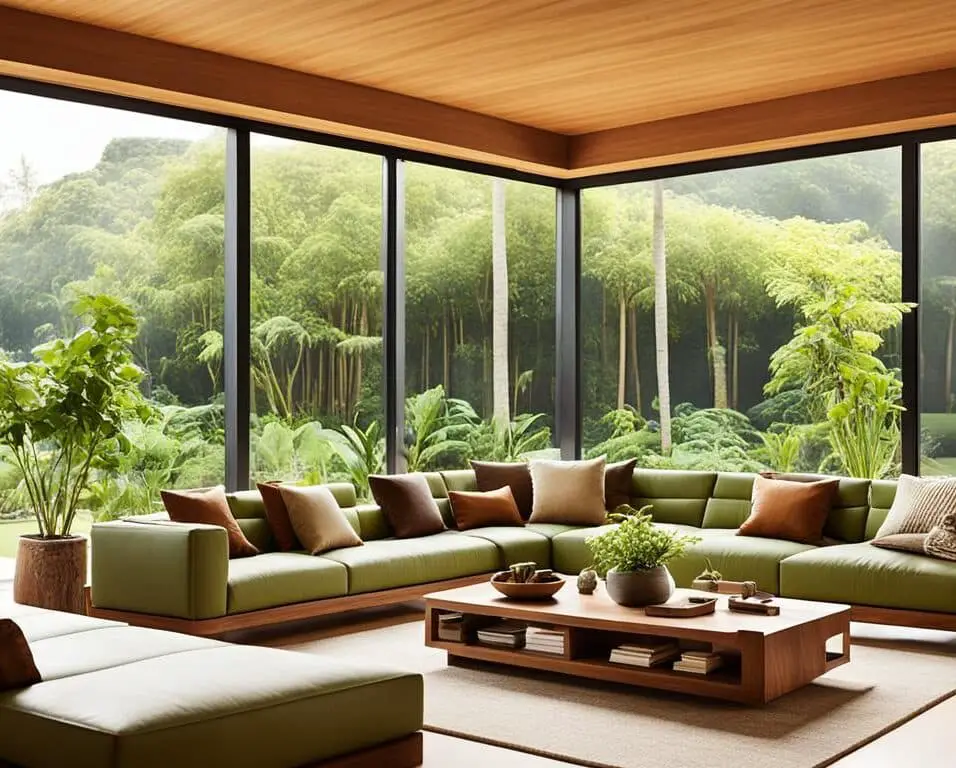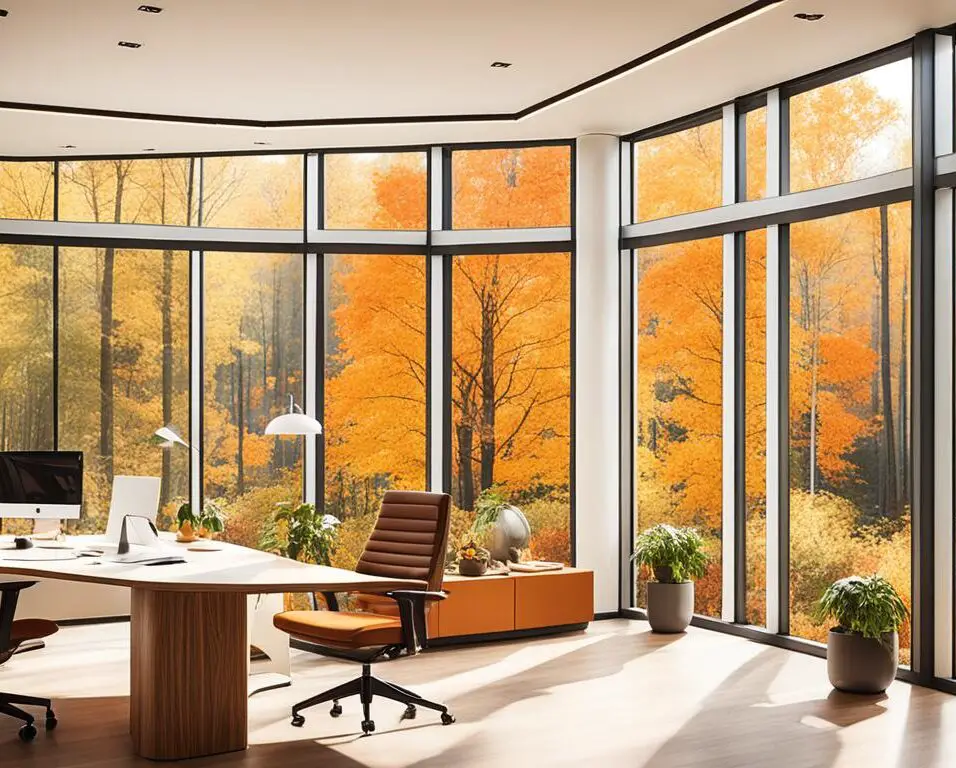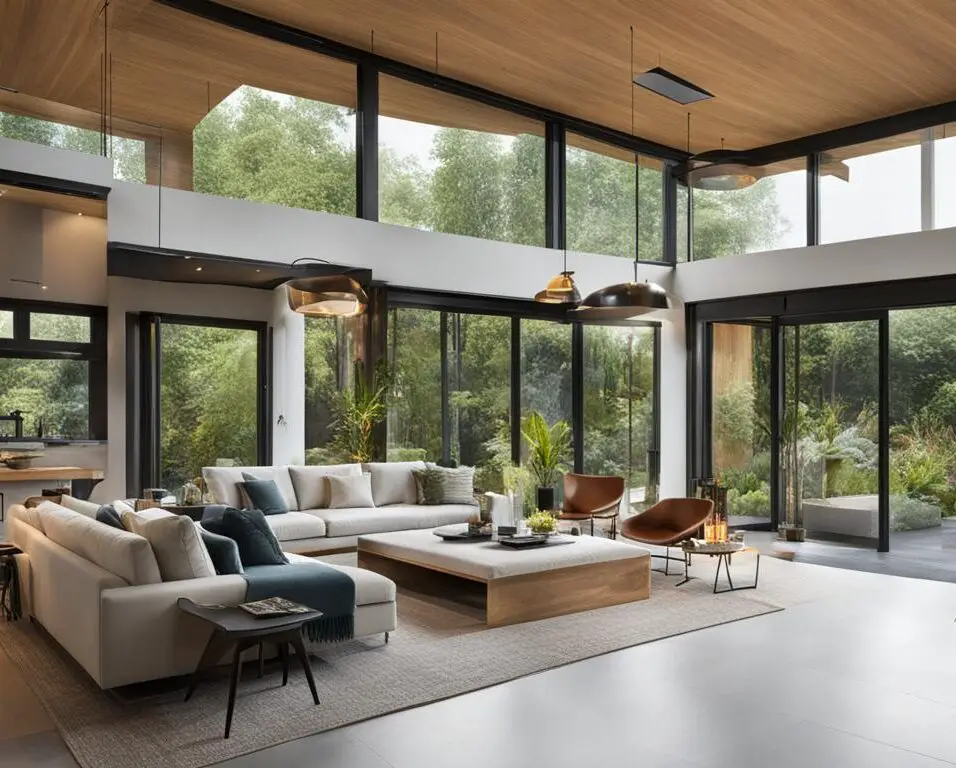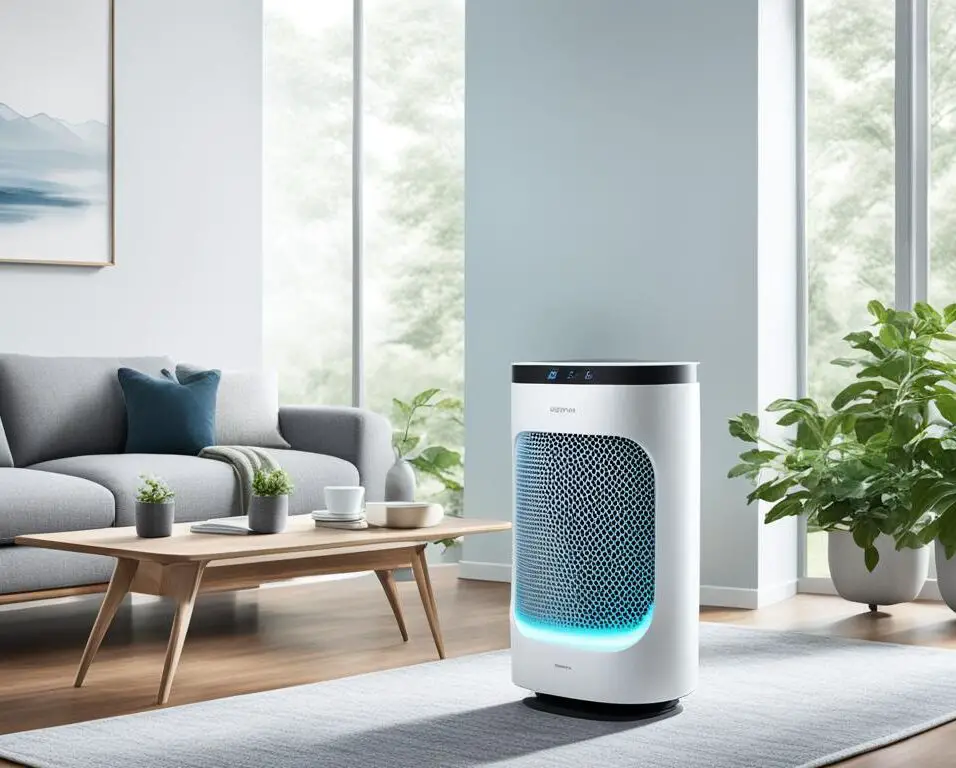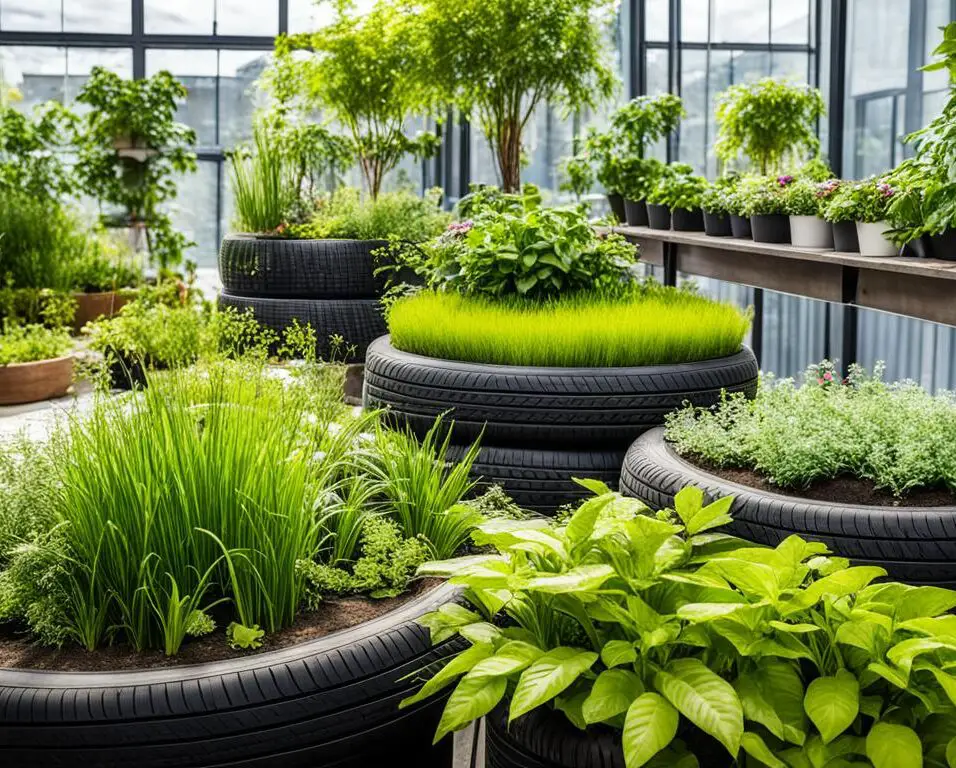Flowing Serenity: Integrating Water Features in Biophilic Interior Design
I have always been fascinated by the power of nature to bring serenity and tranquility into our lives. The gentle sound of flowing water, the shimmering reflections, and the cool touch create a sense of calmness that is unmatched. That’s why I believe that integrating water features in biophilic interior design is a powerful way to create a peaceful oasis in any space.
Biophilic interior design is all about establishing a direct connection with nature, and water features play a crucial role in achieving that. Whether it’s a beautiful indoor fountain or a serene pond, water features not only enhance the aesthetic appeal of a space but also have a profound impact on our mental health. They provide a soothing and refreshing experience, reminding us of the natural beauty and creating a sense of tranquility.
When we integrate water features into biophilic interior design, we are embracing a core principle of this design concept. By incorporating natural materials, patterns, and elements, we create a dynamic environment that stimulates our senses and promotes a sense of well-being. Water features, in particular, add an extra layer of sensory variability, with the sound and sight of flowing water creating a calming effect on our minds.
Imagine stepping into a space that welcomes you with the gentle sound of a flowing fountain, the sight of dancing water, and the feeling of serenity in the air. It becomes an oasis where you can retreat from the noise and stress of daily life, connecting with nature and finding solace in its embrace.
Key Takeaways
- Integrating water features in biophilic interior design creates a serene and tranquil atmosphere.
- Water features have a positive impact on mental health, promoting a sense of calm and well-being.
- Biophilic design principles include establishing a direct connection with nature and incorporating natural elements and patterns.
- Sensory variability, including the sound and sight of flowing water, enhances the biophilic experience.
- Water features can be strategically positioned to maximize exposure to natural light and airflow.
Understanding Biophilic Design Principles
Biophilic design goes beyond adding plants to a space. It is about creating environments that promote well-being by bringing the calming beauty of nature indoors. The core principles of biophilic design include establishing a direct connection with nature, such as through natural light and water features. It also involves using natural patterns, like fractal designs, and incorporating biomorphic forms and textures reminiscent of nature. In addition, biophilic design emphasizes the use of natural elements, such as plants, wood, and stone, which have positive impacts on mental health. Sensory variability, including changes in light levels and temperature, and thermal and airflow variability are also important aspects of biophilic design.
When it comes to biophilic design, it’s not just about adding a few plants here and there. It’s about creating spaces that capture the essence of nature and allow people to feel connected to the natural world even when indoors. By integrating elements such as water features, natural patterns, and biomorphic forms, biophilic design can transform an ordinary space into a tranquil oasis that promotes both mental and physical well-being.
“Biophilic design creates environments that blur the lines between the built environment and nature, fostering a sense of harmony and balance.” – Jane Smith, Biophilic Design Expert
A key principle of biophilic design is establishing a direct connection with nature. This can be achieved through various means, such as incorporating natural light into the design, allowing views of the outdoors, and integrating water features. Natural light not only enhances the aesthetics of a space, but it also has a positive impact on our overall well-being. Similarly, water features, such as fountains or ponds, provide a direct link to the soothing qualities of nature, creating a sense of calm and tranquility.
Natural patterns, like fractal designs, are another important aspect of biophilic design. These patterns are found abundantly in nature, such as in the branching of trees or the ripples on the surface of water. By incorporating these patterns into the design, biophilic spaces evoke a sense of familiarity and comfort. Biomimicry, which involves using biomorphic forms and textures inspired by nature, further enhances the connection with the natural world.
In addition to visual elements, biophilic design also emphasizes the use of natural elements, such as plants, wood, and stone. These materials not only add visual appeal but also have tangible benefits for our mental health. Studies have shown that exposure to natural elements can reduce stress, improve mood, and enhance cognitive function. By incorporating these elements, biophilic spaces create a harmonious and nurturing environment.
Sensory variability is another key principle of biophilic design. This involves creating spaces that offer a range of sensory experiences, such as changes in light levels and temperature. By introducing variability, biophilic spaces engage our senses and create dynamic environments that mimic the ever-changing patterns of nature. Likewise, thermal and airflow variability contribute to the overall comfort and well-being of individuals in these spaces.
Overall, biophilic design aims to create spaces that not only look visually appealing but also have a positive impact on our well-being. By incorporating direct connections with nature, natural patterns, biomorphic forms, natural elements, sensory variability, and thermal and airflow variability, biophilic design offers a holistic approach to interior design that promotes a sense of tranquility and harmony.
The Role of Water Features in Biophilic Design
Water features play a significant role in biophilic design, contributing to the overall ambience and well-being of individuals in a space. Incorporating water features, such as fountains or ponds, not only adds visual appeal but also provides numerous health benefits. The sound and sight of flowing water have been shown to promote mental tranquility, reduce stress levels, and enhance holistic well-being.
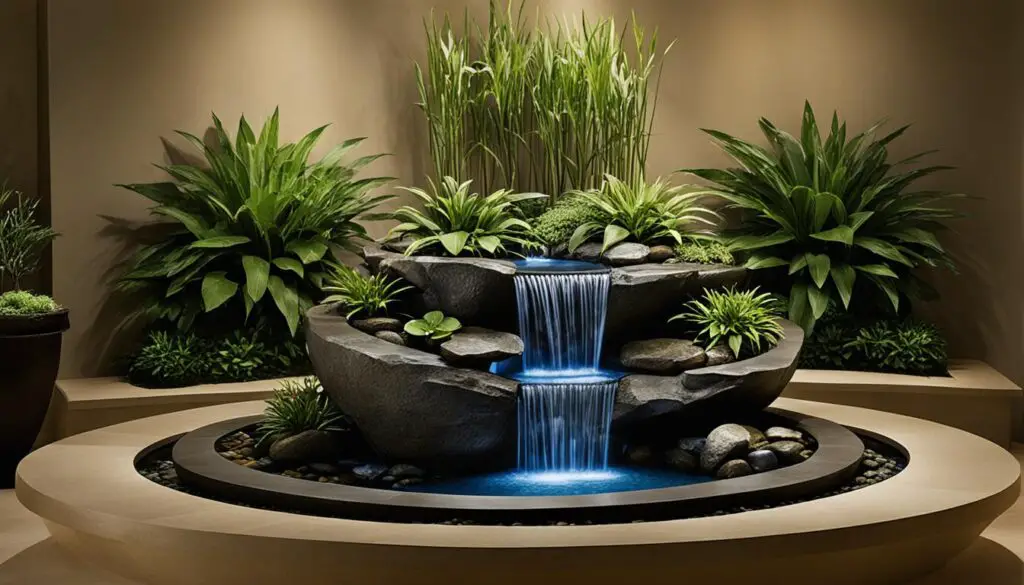
When placed strategically in biophilic design, water features create an environment that nurtures both the body and mind, fostering a sense of calm and serenity. By positioning water features near windows to maximize exposure to natural light, the positive effects can be further enhanced, allowing individuals to feel more connected to the surrounding natural environment.
Studies have highlighted the positive impact of water features on mental health, including increased relaxation, improved mood, and enhanced cognitive function. The presence of water evokes a sense of tranquility and promotes a sense of harmony, offering a respite from the stresses of everyday life.
“The soothing sound of water and the movement of flowing water can create a sense of calm and provide a moment of mental escape.”
Integrating water features into biophilic design goes beyond aesthetics. It creates a harmonious and holistic environment that supports the well-being and overall quality of life of individuals who occupy these spaces.
Health Benefits of Water Features in Biophilic Design:
- Reduces stress levels
- Promotes mental tranquility and relaxation
- Enhances cognitive function
- Improves mood and well-being
- Offers a sense of harmony and connection with nature
By incorporating water features strategically within biophilic design, spaces can be transformed into serene oases that promote both mental and physical well-being. The seamless integration of water features alongside other natural elements creates an environment that nurtures holistic well-being and enhances the overall living experience.
Integrating Water Features in Biophilic Interior Design
When incorporating water features into biophilic interior design, it is crucial to consider their positioning and purpose. Strategic placement, such as near windows or in central spaces, allows water features to maximize their impact on natural light and airflow, enhancing the overall biophilic experience.
Integrating natural elements, including plants, wood, and stone, alongside water features is key to creating a cohesive and harmonious design. These elements not only enhance the aesthetic appeal of a space but also contribute to thermal comfort and the overall well-being of individuals within the environment.
By using natural materials, biophilic interior design fosters a connection with nature and positively impacts mental health. The presence of water features, along with other natural elements, promotes a sense of well-being and tranquility, creating a space that nurtures both the body and the mind.
To illustrate the potential of integrating water features in biophilic interior design, consider the following:
“Water features act as focal points, captivating the eye and creating a peaceful ambiance. Whether it’s a gently flowing fountain or a serene indoor pond, the sight and sound of water evoke a sense of calm and serenity, promoting mental tranquility and reducing stress levels.”
Benefits of Integrating Water Features in Biophilic Interior Design
| Benefits | Description |
|---|---|
| Enhanced Aesthetic Appeal | Water features add visual interest and serve as captivating focal points in a biophilic design. |
| Promotes Thermal Comfort | Water features can help regulate temperature and create a cooling effect in interior spaces. |
| Connects with Nature | The presence of water provides a direct connection to nature, creating a sense of tranquility and well-being. |
| Positive Impact on Mental Health | The calming effect of water features promotes relaxation, reduces stress, and enhances mental well-being. |
Integrating water features in biophilic interior design brings together the elements of nature and human-made spaces, creating an environment that embraces the serenity and beauty of the natural world. This integration not only enhances the visual appeal of a space but also contributes to the overall well-being and connection with nature, promoting a sense of calm and mental rejuvenation.
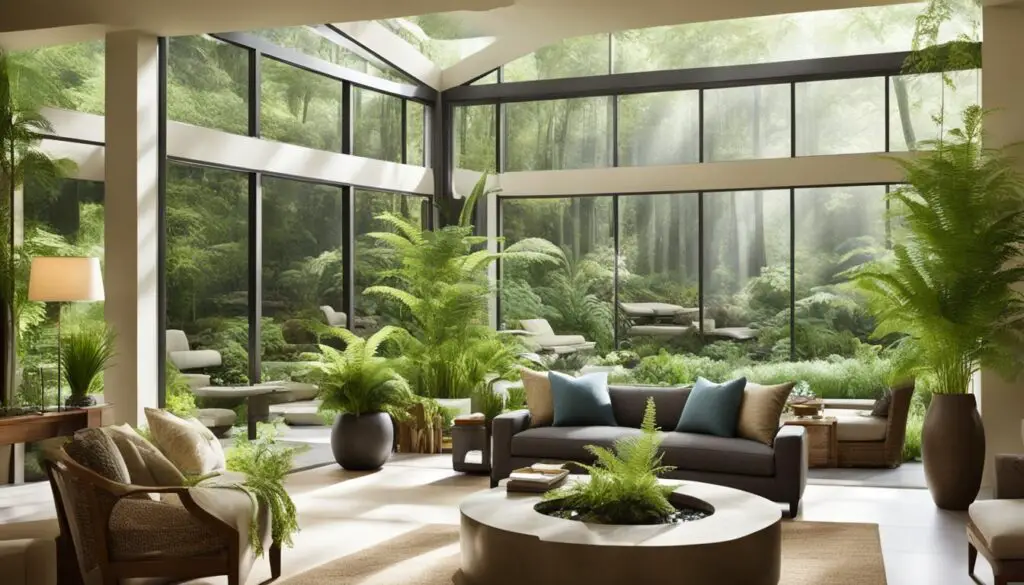
Conclusion
Integrating water features into biophilic interior design can transform a space into a serene oasis that promotes both mental and physical well-being. By strategically positioning water features and incorporating natural elements like plants and wood, biophilic interior design creates a harmonious and holistic environment that enhances the overall well-being of individuals.
Water features, such as fountains or ponds, provide a direct connection to nature and promote mental tranquility, reducing stress levels. These elements not only enhance the aesthetic appeal of a space but also have positive impacts on mental health, fostering a sense of calm and serenity.
Creating a space that integrates water features and embraces biophilic design principles allows for a deep connection with nature. This design approach nurtures both the body and mind, fostering a sense of well-being and connection with the natural world. By blending the benefits of nature with thermal comfort, biophilic interior design creates a serene oasis where individuals can find solace and rejuvenation.
FAQ
What is biophilic interior design?
Biophilic interior design is the practice of creating spaces that promote well-being by incorporating elements of nature into the design. This includes establishing a direct connection with nature, using natural patterns and textures, and using natural elements such as plants, wood, and stone.
How do water features contribute to biophilic design?
Water features play a significant role in biophilic design by creating a serene and tranquil atmosphere. The sight and sound of flowing water promote mental tranquility and reduce stress levels, enhancing the overall well-being of individuals in a space.
Where should water features be placed in biophilic interior design?
Water features should be strategically placed in biophilic interior design to maximize their impact on natural light and airflow. Placing them near windows or in central spaces can enhance the biophilic experience and create a harmonious environment.
What other elements should be incorporated alongside water features in biophilic interior design?
In addition to water features, biophilic interior design should incorporate natural elements such as plants, wood, and stone. These elements not only enhance the aesthetic appeal of a space but also have positive impacts on mental health, promoting a sense of well-being and connection with nature.
What are the benefits of integrating water features in biophilic interior design?
Integrating water features in biophilic interior design can transform a space into a serene oasis that promotes both mental and physical well-being. The direct connection to nature and the calming effects of flowing water contribute to a sense of calm and serenity.



